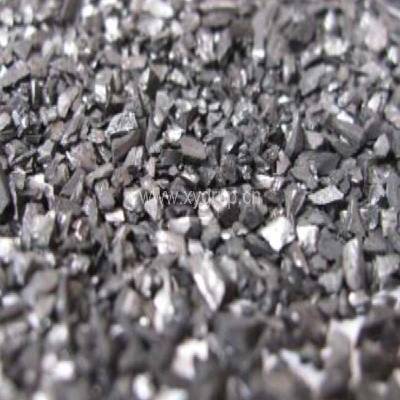What Is the Reason Why the Price of Activated Carbon is Different?
The reasons for the different prices of activated carbon are mainly determined by raw materials, processing procedures, and market supply and demand. Today, we mainly analyze the impact of different raw materials on the price of Activated Carbon. The raw materials of activated carbon are mainly divided into three types: coal, wood, and nut shell, as well as coconut shell activated carbon, the most special of nut shell activated carbon.
Coal activated carbon
Coal-based activated carbon uses high-quality coal as raw material and is refined with advanced technology and equipment. It is refined through a series of processes such as carbonization → cooling → activation → washing. The shape is divided into granular, columnar, powdery, etc.
Advantages: low price and large reserves of raw material resources.
Disadvantages: It is difficult to make high-performance activated carbon with high impurities, and it is difficult to apply to high-demand fields. Its appearance is generally black cylindrical activated carbon, amorphous broken carbon, which is generally made of powdered raw materials and binders through kneading, extrusion molding, carbonization, activation and other processes. It can also be extruded with powdered activated carbon and binder. In recent years, as coal prices have risen, the price advantage has slowly receded and has been gradually replaced by wood and coconut shell products.
Wooden activated carbon
Wooden Activated Carbon is made of high-quality wood flour as raw material, and the shape is powder, column, and particles are refined into wooden activated carbon through high temperature carbonization, granulation, activation and various processes. With the advancement of technology, the first domestic company to use non-bonded molding Activated carbon proprietary technology, made into wood column, wood particles and other granulated activated carbon.
Advantages: large specific surface area, high activity, low ash impurities, well-developed mesopores, strong decolorizing power, large pore structure, light weight, high cost performance.
Disadvantages: high prices and limited resources. Gradually replace coal-based columnar activated carbon for organic solvent recovery, air purification, motorcycle carbon cans, oil and gas recovery, organic waste gas treatment, protection, gas desulfurization and deodorization, catalysts and carriers, etc. Traditional wood powdered activated carbon is used for decolorization for various purposes .

Nutshell Activated Carbon
Nutshell activated carbon
Nutshell Activated Carbon is mainly made of nutshell through carbonization, activation, and refined processing.
Advantages: lower price.
Disadvantages: low strength, difficult to apply to high-demand areas. Compared with coconut shell charcoal, the quality is not as good as coconut shell charcoal, but the price is lower.
Coconut shell activated carbon
Coconut shell activated carbon is one of the best quality in nut shell charcoal. Imported high-quality coconut shell is used as raw material to produce indefinite granular carbon with steam method. The shape is indefinite granule or column shape, with high mechanical strength, developed pore structure and specific surface area. Large, fast adsorption speed, high adsorption capacity, easy regeneration, durable and other characteristics.
Advantages: strong adsorption, high strength, low impurities.
Disadvantages: Affected by the rising prices of imported raw materials, the price is relatively high. It is mainly used for catalysts and catalyst carriers, gold extraction from cyanidation gold mines, drinking water purification, monosodium glutamate industrial solution refining, food, beverages, alcohol, air purification activated carbon and high-purity drinking water deodorization, removal of heavy metals, and deodorization Chlorine and liquid are decolorized. And can be widely used in solvent recovery and gas separation in the chemical industry.











